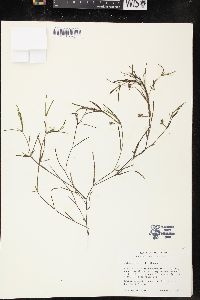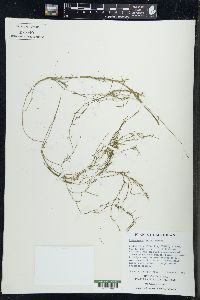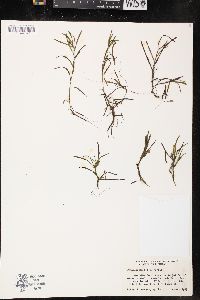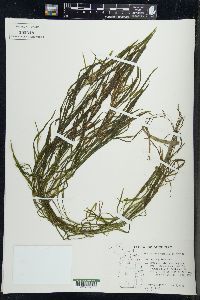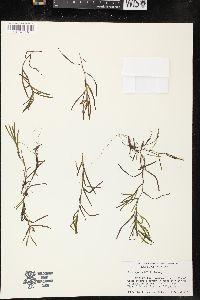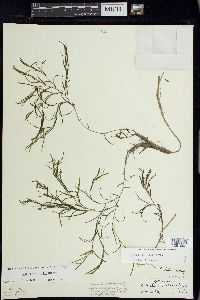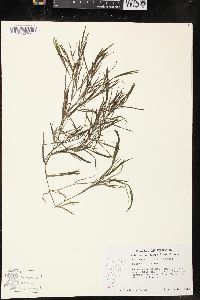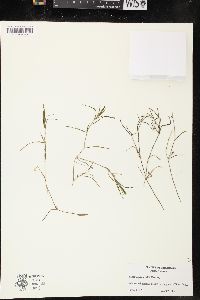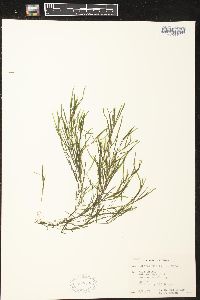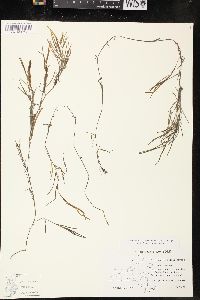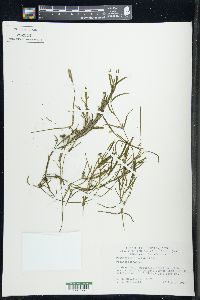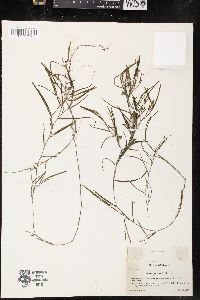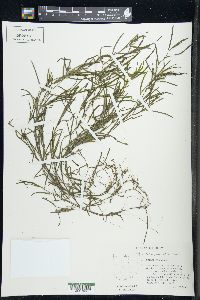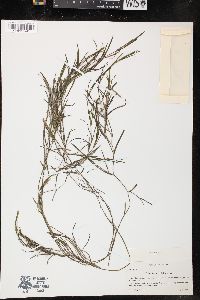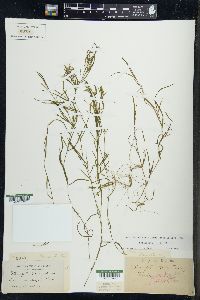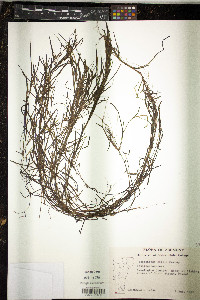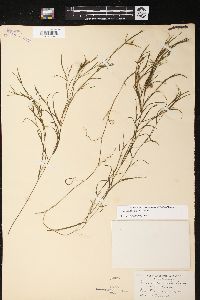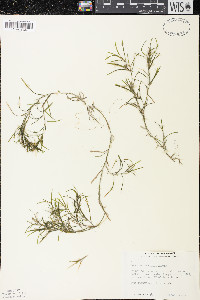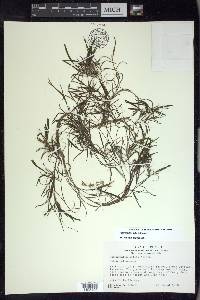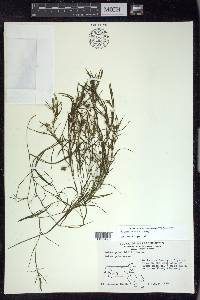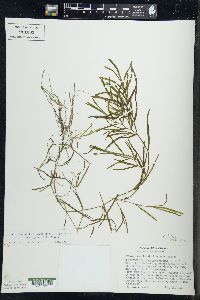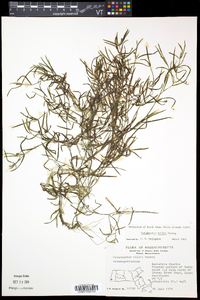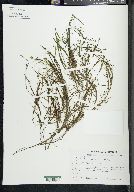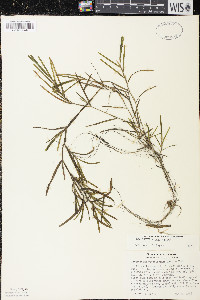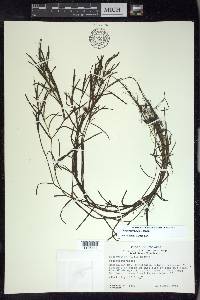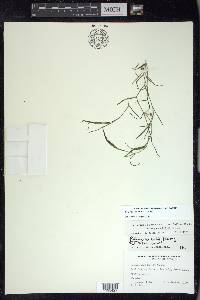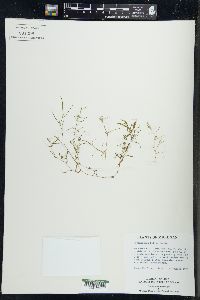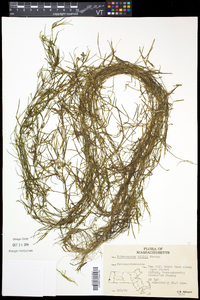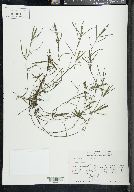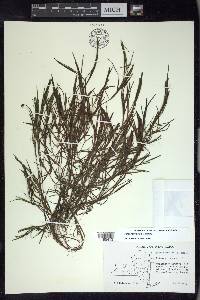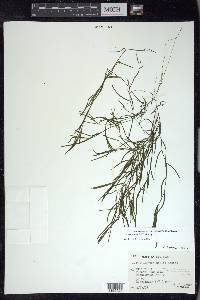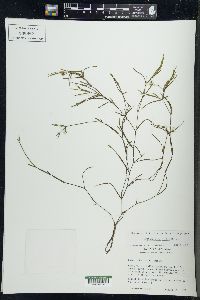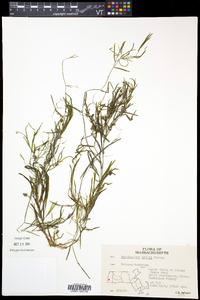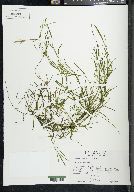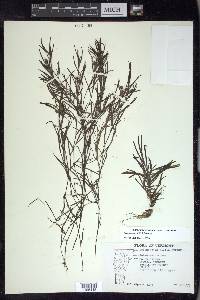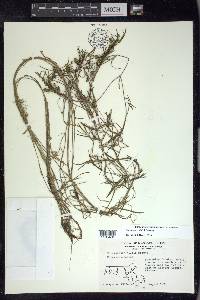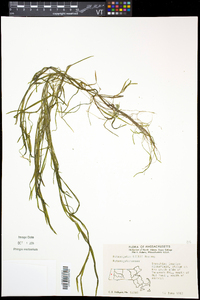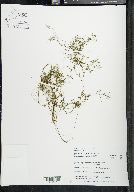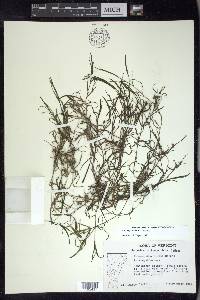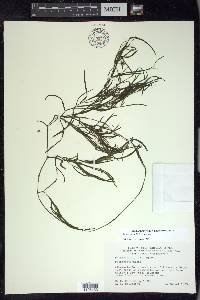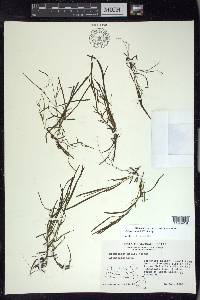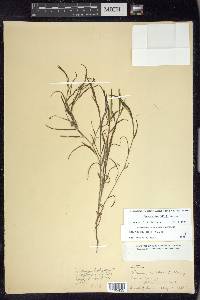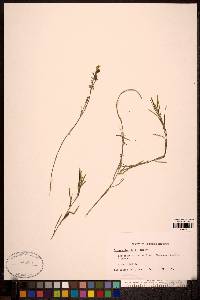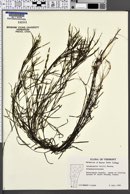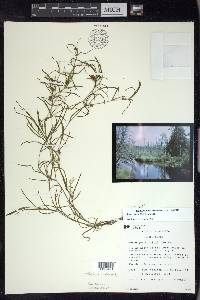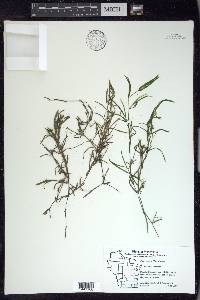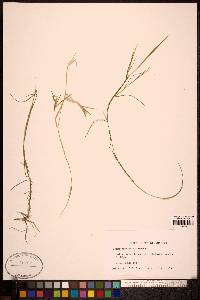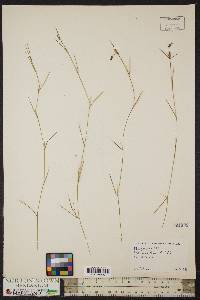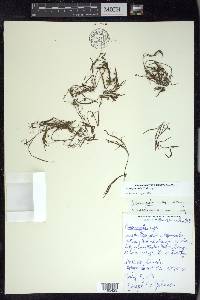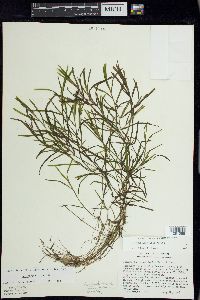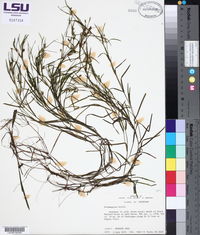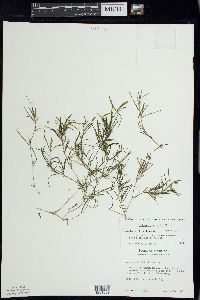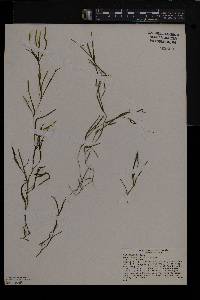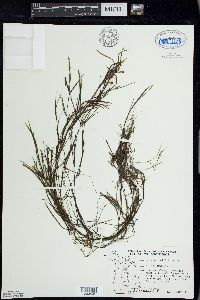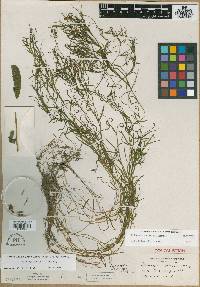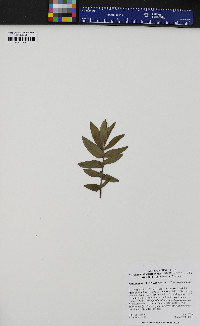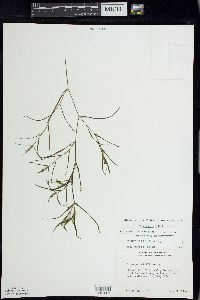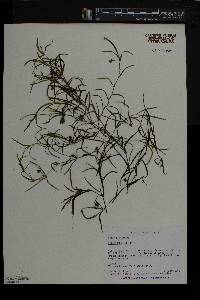Potamogeton hillii
|
|
|
|
Family: Potamogetonaceae
Hill's Pondweed
|
Rhizomes absent. Cauline stems slightly compressed, without spots, 30--60 cm; glands rare, when present, brown to green, 0.1--0.3 mm diam. Turions terminal, rare, 2.8--3 cm ´ 1.5--3 mm, soft; leaves ± 2-ranked; outer leaves 3--4 per side, base not corrugate, apex acute to apiculate; inner leaves undifferentiated. Leaves submersed, ± spirally arranged, sessile, delicate; stipules persistent, inconspicuous, convolute, free from blade, white to light brown, not ligulate, 0.7--1.6 cm, slightly fibrous, rarely shredding at tip, apex obtuse; blade pale green to olive-green, linear, not arcuate, 2--6 cm ´ 0.6--2.5(--4) mm, base slightly tapering, without basal lobes, not clasping, margins entire, not crispate, apex not hoodlike, apiculate to bristle-tipped or rarely blunt, lacunae in 1--2 rows each side of midrib; veins 3. Inflorescences unbranched, emersed; peduncles not dimorphic, axillary and/or terminal, erect to ascending, rarely recurved, slightly clavate, 6--13.5 mm; spikes not dimorphic, globose, (2--) 4--7 mm. Fruits brown to light greenish brown, ovoid to orbicular, turgid, sessile, abaxially and laterally keeled (3-keeled), 2.3--4 ´ 2--3.2 mm, lateral keels without points; beak erect, 0.3--0.7 mm; sides without basal tubercles; embryo with 1 full spiral. Chromosome number unknownnot available. Flowering and fruiting summer. Alkaline waters of marshes, ponds, lakes, and slow-moving streams; 50--400 m; Ont.; Conn., Mass., Mich., N.Y., Ohio, Pa., Vt., Va., Wis. Potamogeton hillii is an easily recognized species either in fruit or when sterile. The leaf blade has a bristle tip and five or fewer veins. Those characters combined with the usual absence of nodal glands will separate this species from all other North American linear-leaved species. Ecologically, it is consistently found in more alkaline waters than any other North American pondweed. A study of 35 localities established the mean to be 124.1 mg/l CaCO3 (C. B. Hellquist 1984).
Stems very slender, usually freely branched, to 1 m, with or more often without nodal glands; rhizome scarcely developed; lvs all submersed, narrowly linear, 3-7 cm נ1-2 mm, usually sharply acute or cuspidate, 3(5)-veined, the lateral veins very delicate, the midvein flanked by one or 2 rows of lacunar cells on each side; stipular sheaths axillary, free, white or light brown, 1-1.5 cm, becoming fibrous; winter-buds ±sharply differentiated; peduncles mostly axillary, 5-15 mm, clavate, commonly recurved; spike capitate, 4-7 mm, with 1(2) whorls of fls; body of the fr obovate, flattened, 2.5-4 mm, with a low, sharp dorsal keel and a pair of lateral keels, the beak ca 0.5 mm; 2n=26. Chiefly in clear, cold, calcareous waters; irregularly from Mass. and Vt. to Pa. and w. to Ont., O., and Mich. (P. porteri) Gleason, Henry A. & Cronquist, Arthur J. 1991. Manual of vascular plants of northeastern United States and adjacent Canada. lxxv + 910 pp. ©The New York Botanical Garden. All rights reserved. Used by permission. |


